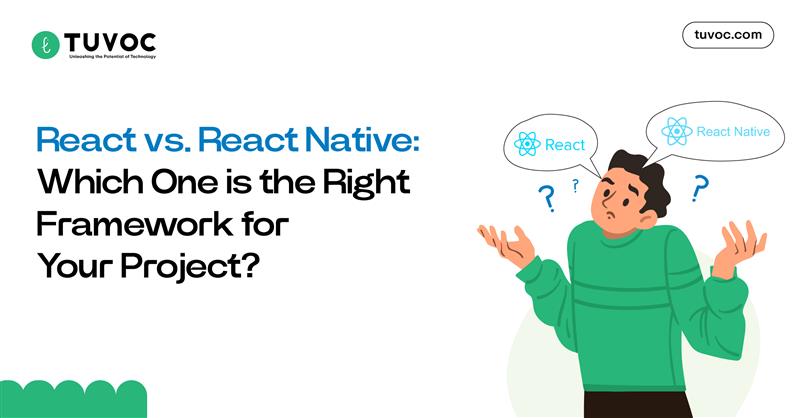As we know, the world of software development is constantly changing, and selecting the right technology can determine whether a project thrives or faces significant challenges. As a leading web app development company, Tuvoc Technologies has guided countless clients through the framework selection process, and one common question persists: “How to choose between React and React Native for your project?”
Both frameworks, which have been developed by Facebook’s engineering team, have completely transformed the way we create digital experiences. However, although they share a name and some foundational principles, they fulfill notably different roles. This comprehensive guide explores React vs React Native and will help you understand the key differences between React and React Native for app developers to make an informed decision for your next web application development project.
Understanding React
What is React?
React (sometimes called ReactJS) is an open-source JavaScript library developed by Facebook in 2013 for building dynamic user interfaces, primarily for web applications. It’s not a full-fledged framework but rather a powerful library that focuses on the view layer of the MVC (Model-View-Controller) architecture.
React’s philosophy is very simple yet revolutionary! Break down most of the complex interfaces into reusable, self-contained components that manage their own state. This approach has transformed how developers think about web app development.
Key Features of React
- Component-Based Architecture: React’s building-block approach enables developers to create encapsulated UI components that manage their own state, then compose them to build complex UIs. This modularity is a game-changer for maintainability and scalability in frontend development.
- Virtual DOM: One of React’s most praised features, the Virtual DOM serves as a streamlined replica of the real DOM. By assessing modifications within this virtual space, React updates only the essential elements in the actual DOM, leading to notable performance enhancements.
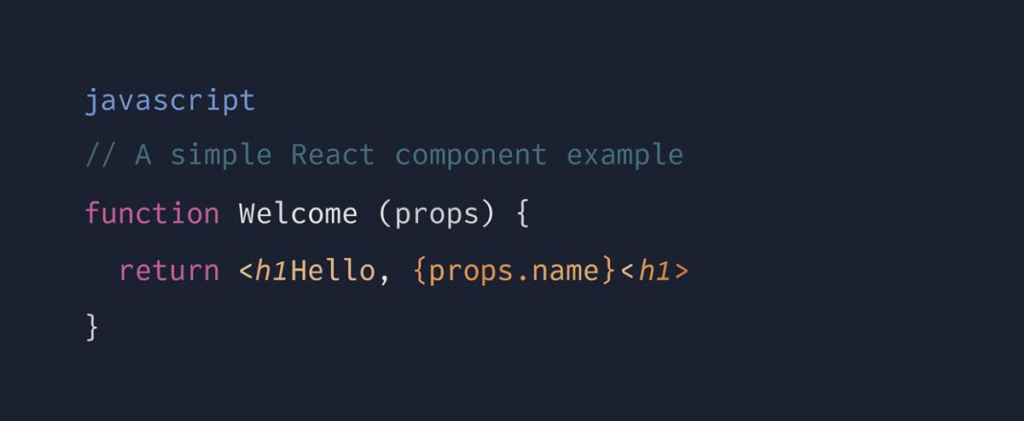
- JSX (JavaScript XML): This syntax extension resembles HTML yet harnesses the complete capabilities of JavaScript. It simplifies the creation of UI components, enhancing intuitiveness while preserving JavaScript’s functionality.
- Reusable Components: The DRY (Don’t Repeat Yourself) principle is fundamental in React. Components are reusable across various sections of an application or even in different projects, which speeds up development time.
Advantages of Using React
- Strong Community Support: With over 200,000 stars on GitHub and backed by Facebook, the React library enjoys robust community support, extensive documentation, and countless third-party libraries.
- Rich Ecosystem: The React framework ecosystem includes tools like Redux for state management, React Router for navigation, and Next.js for server-side rendering, addressing virtually any web application development need.
- Flexibility: React plays nicely with other libraries and frameworks, allowing developers to integrate it into existing projects or use it alongside other technologies.
- SEO-Friendly Options: Although single-page applications generally face SEO challenges, React frameworks such as Next.js provide server-side rendering, allowing search engines to access the content more effectively.
Limitations of React
- Just the UI Layer: React is limited to the view layer, necessitating other libraries for routing, state management, and API communication.
- Learning Curve: The combination of JSX and component lifecycle methods can present a steeper learning curve for beginners compared to more traditional approaches.
- Rapid Evolution: The rapid evolution of React leads to regular updates and possible compatibility challenges, compelling developers to consistently adjust.
Understanding React Native
What is React Native?
React Native builds on React’s component philosophy for mobile app development. Introduced by Facebook in 2015, it allows developers to create mobile apps for both iOS and Android from a single codebase using JavaScript and React principles.
What sets React Native apart is that, unlike traditional hybrid apps that use a WebView for rendering, it directly renders to the native platform’s UI components. This results in apps that look, feel, and perform akin to genuinely native applications.
Key Features of React Native
- Native Components: React Native uses JavaScript to render actual native UI components, not web views. When you build a Text component in React Native, it renders as a UITextView on iOS and a TextView on Android.
- Hot Reloading: This feature allows developers to see changes in real-time without recompiling the entire application, dramatically speeding up the development cycle.
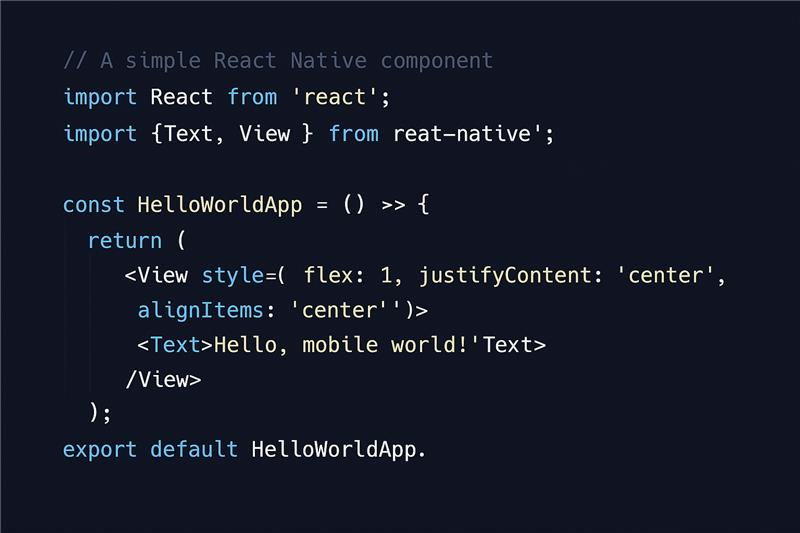
- Access to Native APIs: React Native provides JavaScript interfaces to platform APIs, allowing access to the camera, location, storage, and other device features through various React Native development tools.
- Platform-Specific Code: When needed, developers can write platform-specific code and components with .ios.js and .android.js extensions, optimizing the user experience for each platform when building mobile apps.
Advantages of Using React Native
- Code Reusability: The ability to maintain a single codebase for both iOS and Android platforms can reduce development time by up to 50%, a significant advantage for businesses with time or budget constraints when considering React Native for mobile app development.
- Cost-Effective Development: Developing separate native applications for iOS and Android requires different skillsets and more development time. Our React Native development services offer a more economical approach without major compromises in quality.
- Active Community: With over 130,000 stars on GitHub, React Native has a thriving community contributing to its ecosystem of libraries, tools, and plugins.
- Familiar Structure for React Developers: Web developers already familiar with React can transition to mobile development more easily with React Native.
Limitations of React Native
- Performance for Complex Applications: While perfectly adequate for most applications, React Native may not match the performance of truly React Native vs native apps for graphics-intensive games or highly complex animations.
- Limited Access to Some Native Modules: Not all native functionalities have corresponding React Native modules, occasionally requiring custom native code bridges, which is an important consideration when evaluating which one is better React or React Native for your business.
- Debugging Challenges: Debugging can be more complex in React Native due to the bridge between JavaScript and native code, requiring careful mobile app performance optimization.
Key Differences Between React and React Native
Platform Focus
- React: Primarily designed for React web applications, rendering to the browser’s DOM.
- React Native: Specifically created for mobile application development, rendering to native mobile UI components, making it important to understand when to use React vs React Native for development.
Development Environment
- React: Uses HTML, CSS, and JavaScript to create web applications. The development environment is typically a web browser with developer tools.
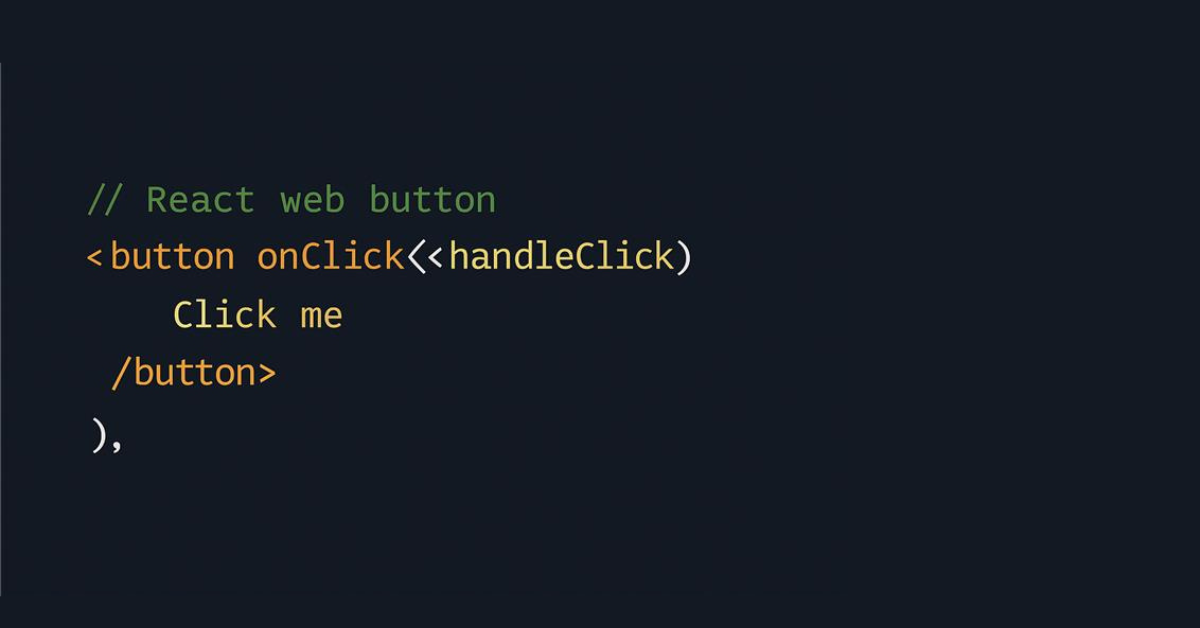
- React Native: Uses JavaScript and React Native’s component library instead of HTML and CSS. Development requires either Android Studio or Xcode for emulation and testing.
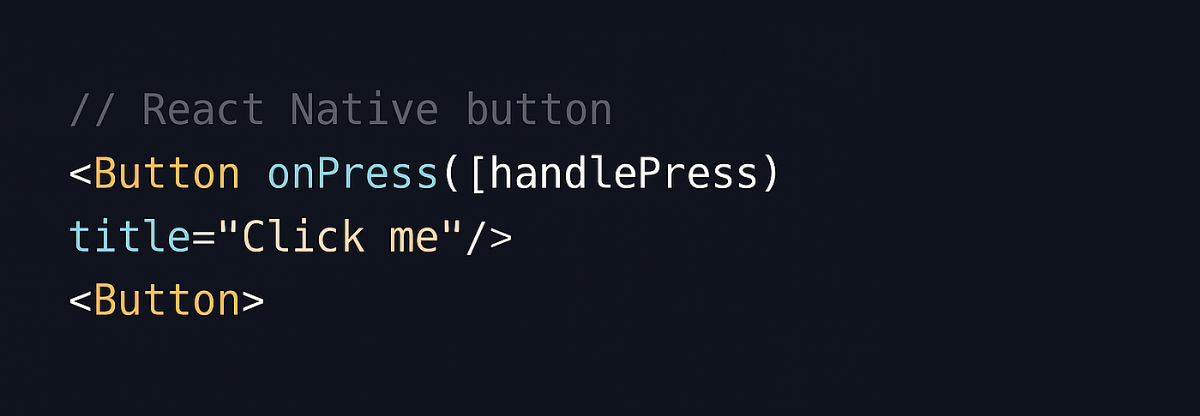
Styling Approaches
- React: Uses CSS, CSS-in-JS libraries, or styled-components for styling elements.
- React Native: Uses a JavaScript object similar to CSS but with camelCase properties and without inheritance. All styles are scoped to components.
DOM Access
- React: Full access to the browser DOM and its APIs.
- React Native: No DOM access; instead uses native APIs and components.
Navigation
- React: Uses React Router or similar libraries for navigational elements.
- React Native: Requires specific navigation libraries like React Navigation to handle screen transitions and navigation stacks.
When to Choose React
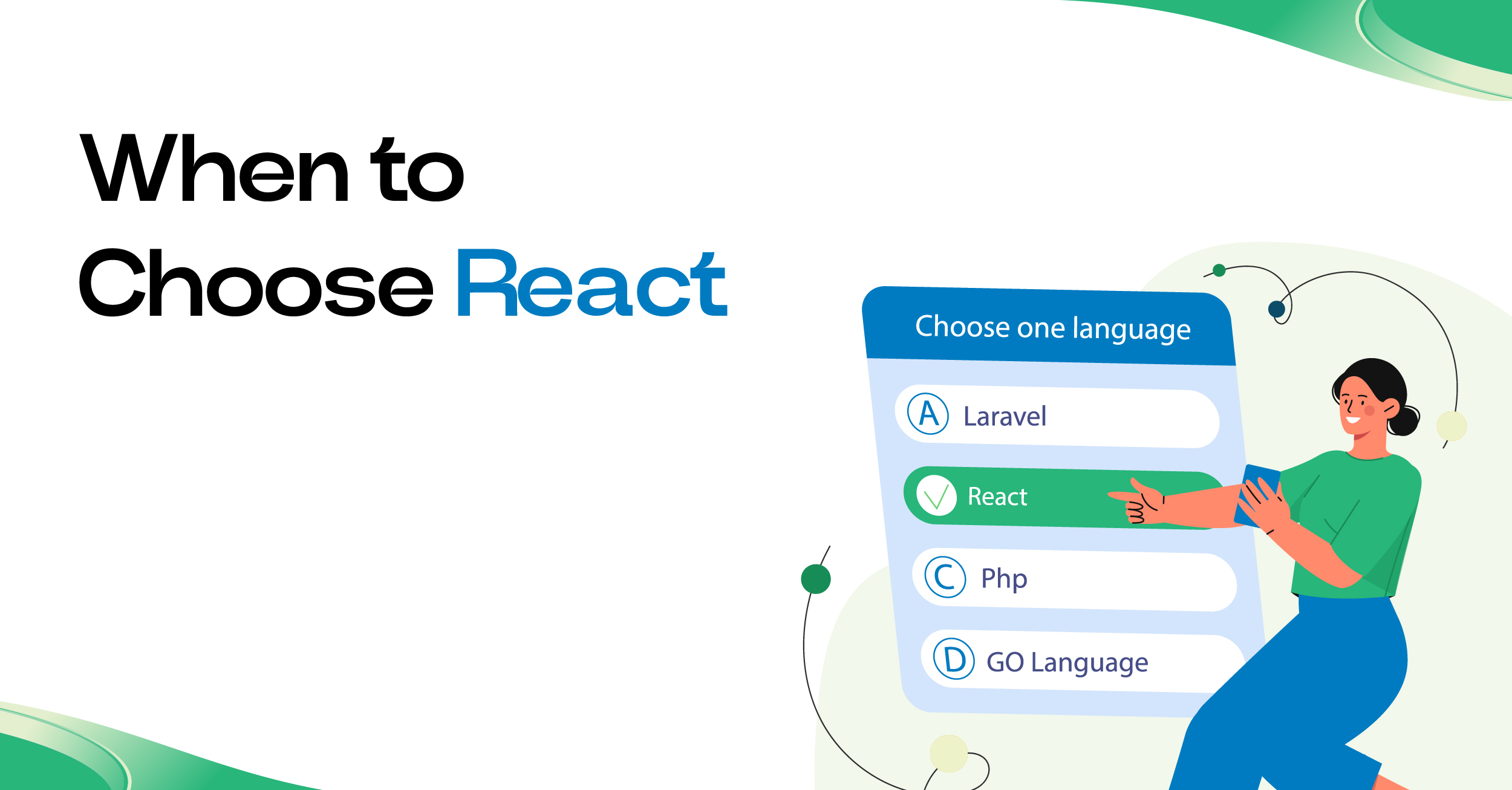
Project Scenarios Ideal for React
- Web Applications and Websites: Whether it’s a basic corporate site or an advanced web application, React’s web-first approach clearly positions it as the top choice for browser-based initiatives.
- Complex User Interfaces: Applications that need detailed user interfaces featuring many interactive elements take advantage of React’s component-driven architecture and optimized rendering.
- Progressive Web Apps (PWAs): For projects that seek to deliver app-like experiences within a browser, React paired with service workers can develop robust PWAs.
- Single-Page Applications (SPAs): React’s virtual DOM is ideally suited for SPAs that require fluid transitions between various views without needing full page reloads.
Considerations
- SEO Requirements: If search engine visibility is crucial for your project, React with server-side rendering solutions like Next.js can help address traditional SPA SEO challenges.
- Web Developer Availability: The abundant pool of React developers makes staffing React projects relatively straightforward, especially when implementing ReactJS Best Practices.
- Integration with Existing Web Platforms: React can be incrementally adopted, making it suitable for enhancing existing web applications and staying current with ReactJS 19: Features and Updates.
When to Choose React Native
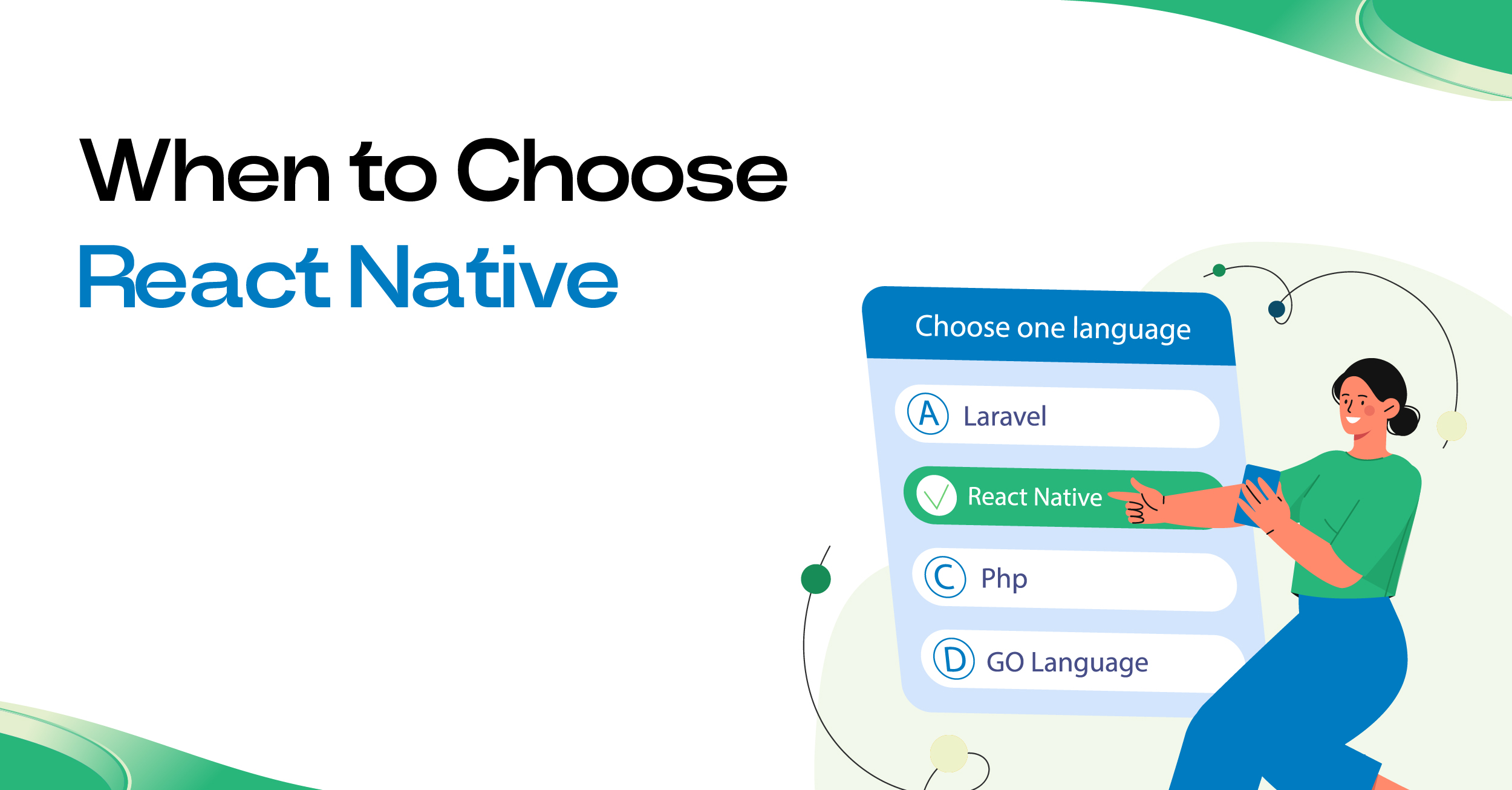
Project Scenarios Ideal for React Native
- Cross-Platform Mobile Apps: If you aim to reach both iOS and Android users while managing limited resources, React Native’s “write once, run anywhere” philosophy provides notable advantages.
- Rapid Prototyping: For startups and companies eager to quickly validate mobile ideas, React Native supports quicker iteration cycles.
- Apps of Moderate Complexity: Business applications, e-commerce sites, and social media platforms that feature standard UI components perform exceptionally well using React Native.
- Teams with React Experience: Organizations already skilled in React can apply that expertise to mobile development.
Considerations
- Budget Constraints: When you hire React Native developers instead of separate iOS and Android teams, development costs can be substantially reduced.
- Time-to-Market Pressure: React Native’s faster development cycle can be crucial for projects with tight deadlines, which is a key factor when deciding should I use React or React Native for my app development.
- Maintenance Resources: A single codebase is typically easier and less expensive to maintain than two separate native applications, especially when you hire dedicated React Native developer resources for ongoing support.
Latest Statistics and Community Support
The continued growth of both React and React Native is evident in their adoption rates and community engagement:
- React: Used by approximately 39.5% of developers worldwide for web development, with over 200,000 stars on GitHub, making it one of the most popular JavaScript Frameworks.
- React Native: Preferred by about 35% of developers for cross-platform mobile applications, with more than 130,000 GitHub stars, showing its dominance for React Native for mobile app development.
- Job Market: LinkedIn currently lists thousands of open positions for React and React Native developers, indicating strong industry demand for these skills.
- Major Adopters: Companies like Facebook, Instagram, Netflix, and Airbnb use React for their web platforms, while Instagram, Facebook, Walmart, and Tesla use React Native for their mobile applications.
Case Studies and Real-World Applications
React Success Stories
- Netflix: After implementing React, Netflix reported a 50% improvement in React app performance with faster startup time and significantly reduced development time for new features.
- Airbnb: The accommodation giant uses React to handle its complex UI requirements and reported a 26% increase in development speed after adoption, demonstrating the effectiveness of performance optimization techniques.
React Native Success Stories
- Shopify: The e-commerce platform revamped its mobile point-of-sale system using React Native, ensuring feature parity across platforms with 70% code reuse and quicker release cycles.
- Microsoft: The tech giant has increasingly adopted React Native for applications like Microsoft Office, citing cost efficiency and improved time-to-market.
At Tuvoc Technologies, we’ve leveraged both React and React Native for numerous client projects as a leading React Native App Development Company, achieving remarkable results:
Reduced development time by 40% for an e-commerce client by using React Native for their mobile app
Increased page load performance by 60% for a financial services web application after migrating to React
Enabled a startup client to launch simultaneously on web, iOS, and Android platforms with a shared component library between React and React Native, demonstrating how to decide between React and React Native for web and mobile apps.
Performance Optimization
Regardless of which framework you choose, performance optimization remains critical:
For React web applications:
- Implement code splitting to reduce initial load time
- Use React.memo and useMemo for component memoization
- Virtualize long lists with libraries like react-window
For React Native mobile apps:
- Optimize image assets
- Implement native modules for performance-critical features
- Use FlatList instead of ScrollView for long lists
Conclusion
Choosing between React and React Native isn’t about determining which is “better” in absolute terms, it’s about selecting the right tool for your specific requirements. Let’s recap the key considerations:
Choose React when:
- You’re building for the web
- You need maximum flexibility for a complex web interface
- SEO and web presence are priorities
- Your team has strong web development skills
Choose React Native when:
- You need both iOS and Android apps
- Development speed and budget efficiency are crucial
- You have existing React expertise to leverage
- Your app has standard mobile UI patterns, making it is React or React Native better for mobile-first projects
At Tuvoc Technologies, our approach is always to align technology choices with business objectives. We specialize in both web application development and React Native for mobile app development, offering expert guidance throughout the decision process for optimizing app performance.
The positive aspect? Skills are highly transferable between the two frameworks. This indicates that your investment in mastering either technology will be beneficial if you decide to transition to the other platform later.
Looking for professional assistance on your upcoming project? Our team of skilled React and React Native developers is prepared to turn your ideas into reality. Get in touch with Tuvoc Technologies today to explore your project needs and find out which framework suits your specific requirements best.
FAQs
React is a JavaScript library intended for developing dynamic user interfaces mainly for web applications. In contrast, React Native is a framework aimed at producing cross-platform mobile apps for both iOS and Android. While React concentrates on web development using HTML, CSS, and JavaScript, React Native utilizes native UI components designed for mobile platforms.
The choice depends on your project requirements:
Choose React if you’re building web applications, need SEO optimization, or have a team skilled in web development.
Choose React Native if you’re developing mobile apps for both iOS and Android, need faster development cycles, or want to reduce costs with a single codebase.
Absolutely! You can definitely use both frameworks together. For instance, you might create a web application using React and a mobile app with React Native, all while sharing components or logic between the two. This approach is especially great for projects looking to launch across multiple platforms at the same time!
React Native is a great choice for most mobile applications, but for complex animations or graphics-heavy tasks, like gaming, you might find that fully native apps perform a little better. In those cases, exploring native development could be a smart option!
Developing with React is all about leveraging the creativity of HTML, CSS, and JavaScript in a browser setting, while React Native brings a whole new experience with tools like Android Studio or Xcode that help you emulate and test your mobile apps. Plus, there’s a fun twist in styling: React embraces CSS, but React Native gets a bit quirky by using JavaScript objects with camelCase properties!
Have an Idea? Let’s Shape It!
Kickstart your tech journey with a personalized development guide tailored to your goals.
Discover Your Tech Path →Share with your community!
Latest Articles

Trading System Architecture 2026 | From Microservices to Agentic Mesh
Exclusive Key Takeaways: Agentic mesh replaces microservices to minimize network hop latency. Edge-native compute moves execution logic closer to exchange…

Trading Platform Development | Cost vs. ROI in 2026
Introduction - The Real Price of Building a Trading Platform in 2026 There is uneasiness among investors worldwide. The uncertainty…

The Ultimate Trading Platform Development Checklist
Unique Takeaways: The Build vs. Rent Verdict:Why custom trading software development is the only path to owning your IP and…
